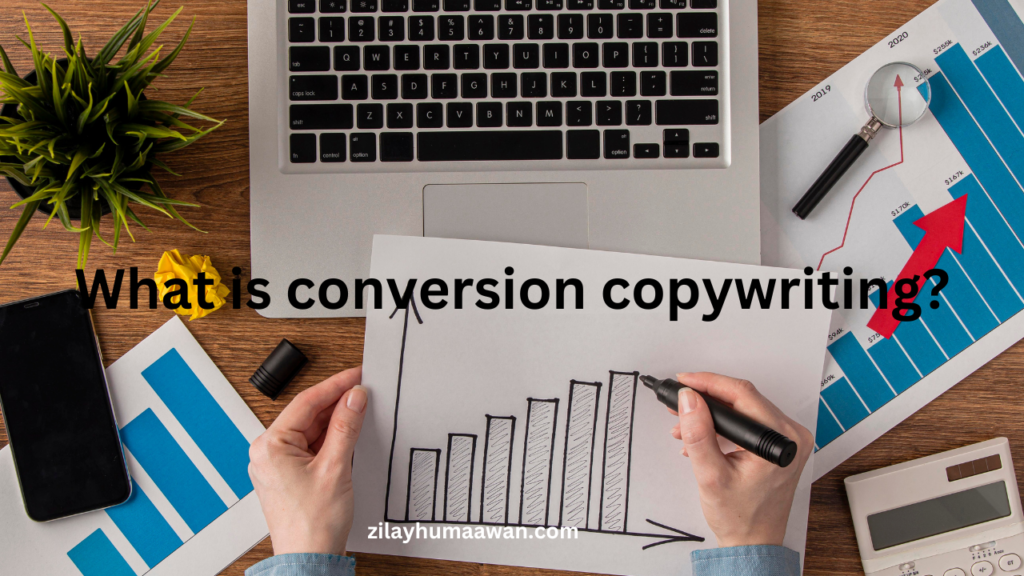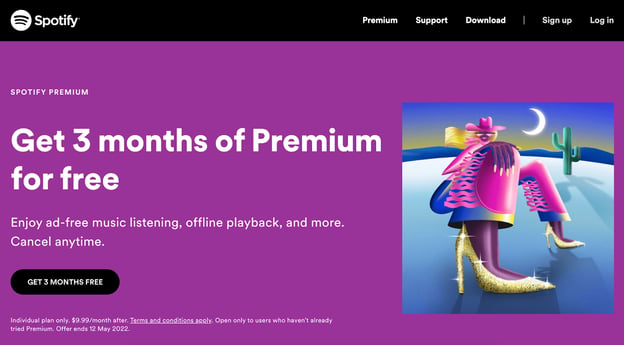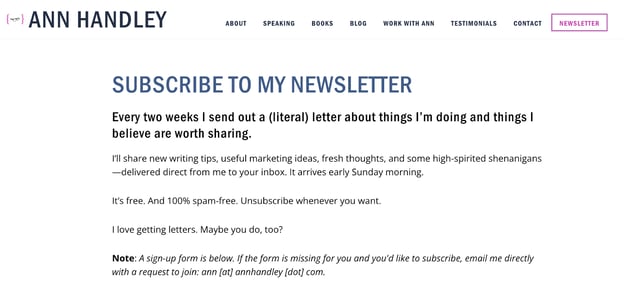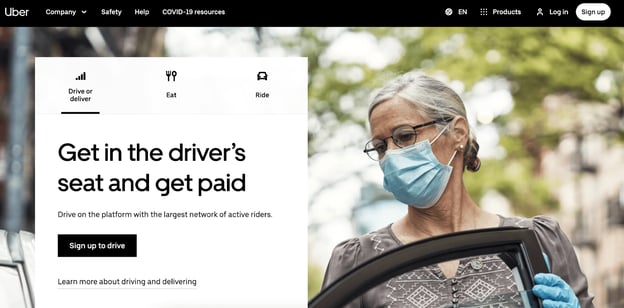What is conversion copywriting?- Curious
Have you ever wondered what makes certain words on a webpage so persuasive that you can’t resist taking action?
That’s the magic of conversion copywriting. In a world inundated with information, mastering this art can be a game-changer for businesses.
But what exactly is conversion copywriting and how can it transform your content strategy?
Will ai take over copywriting?
What is conversion copywriting?
Conversion copywriting is a strategic form of writing aimed at persuading and inspiring action from the reader, typically leading to a desired outcome such as a sale, sign-up, or click.
It focuses on understanding the audience’s needs, emotions, and pain points to create compelling and targeted content.

By using persuasive language, emphasizing benefits, and addressing objections, conversion copywriting aims to guide potential customers through the buyer’s journey, ultimately increasing the likelihood of them taking the desired action.
It combines psychology, empathy, and clear communication to optimize conversion rates and achieve specific business goals.
Here where to learn copywriting?
Four tips for getting started with conversion copywriting
1. Do your research
For effective conversion copywriting, start by thorough research. Understand your target audience’s demographics, behaviors, and pain points.
Dive into competitors’ strategies and identify successful patterns. Use tools like surveys, interviews, and analytics to gather valuable insights.
This research lays the foundation for creating compelling, audience-centric content that resonates with your potential customers and addresses their specific needs, fostering a stronger connection and increasing the likelihood of conversion.
2. Start at the finish
“Start at the finish” in conversion copywriting means defining the desired outcome or action you want your audience to take.
Begin by clarifying your goals, whether it’s making a purchase, signing up, or clicking through.
By understanding the end goal, you can reverse engineer your copy to strategically lead readers towards that action.
Craft your content with a clear and compelling call-to-action, ensuring every element guides the audience seamlessly towards the intended conversion point.
Here can you make money copywriting?
3. Understand the buyer’s journey
To excel in conversion copywriting, grasp the buyer’s journey—awareness, consideration, and decision stages.
Tailor your content to match the audience’s needs at each step.
Create engaging, informative content for the awareness stage, build trust and showcase value during consideration, and use persuasive language with clear calls-to-action for the decision stage.
Aligning your copy with the buyer’s journey ensures relevance and resonance, fostering a smoother progression from initial interest to eventual conversion.
4. Nail your calls to action
Perfecting your calls to action (CTAs) is crucial in conversion copywriting. Clearly articulate the desired action using compelling, action-oriented language.
Ensure visibility and accessibility, placing CTAs strategically throughout your content. Make them stand out visually and align them with the audience’s motivation and journey stage.
A well-crafted CTA guides readers decisively, prompting them to take the intended action, be it making a purchase, subscribing, or exploring further—ultimately maximizing conversion rates.
10 Conversion Copywriting Tips, According to Lately’s CEO
1. Write like a boss
The first step, “Write like a boss,” emphasizes adopting a confident and authoritative tone in conversion copywriting.
It encourages crafting messages that assertively convey value, address customer needs, and command attention.
This approach aims to establish credibility and resonate with the audience, ultimately driving successful conversions.
Here what is sales copywriting?
2. Remove the phrase ‘check out’ from your vocabulary
The second step, “Remove the phrase ‘check out’ from your vocabulary,” advises avoiding generic and overused terms like ‘check out’ in copywriting.
Instead, opt for compelling and action-oriented language that motivates readers to engage or make a purchase.
This step aims to inject energy and urgency into the call-to-action, enhancing conversion potential.
3. Don’t bury the lede.
The third step, “Don’t bury the lede,” urges prioritizing the most crucial information upfront in your copy.
Grab your audience’s attention immediately with the main message or offer, avoiding unnecessary details that may overshadow the key point.
This strategy ensures clarity and captivates readers from the outset, enhancing conversion chances.
4. Use negative calls-to-action instead of positive ones.
The fourth step advises employing negative calls-to-action rather than positive ones in copywriting.
Instead of emphasizing what to do, highlight what to avoid, creating a sense of urgency and potential loss.
This approach can stimulate quicker decision-making and drive higher conversion rates by tapping into a fear of missing out or making the wrong choice.
5. Leverage ‘why’ and ‘because
The fifth step encourages leveraging “why” and “because” in copywriting. Clearly articulate the reasons behind a call-to-action, product, or service.
Providing a compelling rationale increases persuasiveness, helping customers understand the value and benefits.
This strategy fosters a deeper connection with the audience and enhances the likelihood of successful conversions.
6. Use the royal we/you.
The sixth step, “Use the royal ‘we/you,’” suggests employing inclusive language in copywriting.
Incorporate “we” to make the audience feel part of a shared experience and “you” to personalize the message.
This technique fosters a sense of connection, making readers feel involved and increasing the likelihood of engagement and conversions.
7. Read what you write out loud.
The sixth step, “Read what you write out loud,” emphasizes the importance of auditory evaluation in copywriting.
By vocalizing the content, writers can identify inconsistencies, awkward phrasing, or unclear expressions.
This practice enhances overall clarity and ensures that the message resonates effectively with the audience, potentially boosting conversion rates.
8. Write with your eyeballs.
The seventh step, “Write with your eyeballs,” suggests adopting a reader’s perspective in copywriting. Visualize how the content will be perceived by your audience.
This approach helps craft visually engaging and reader-friendly copy, enhancing comprehension and retention.
Considering the audience’s viewpoint improves the overall effectiveness of the message in driving conversions.
Here where to start copywriting?
9. Write with a clear objective.
The eighth step, “Write with a clear objective,” underscores the importance of a focused purpose in copywriting.
Clearly define the goal of your message, whether it’s to inform, persuade, or prompt action.
This clarity enables precise communication, ensuring that your copy serves its intended purpose effectively, ultimately enhancing conversion potential.
10. Dog-food your own marketing
The ninth step, “Dog-food your own marketing,” advocates personally experiencing and using your own product or service.
By immersing yourself in the customer’s perspective, you gain insights that inform more authentic and persuasive marketing.
This practice ensures that your promotional efforts genuinely resonate with your audience, fostering trust and boosting conversions.
Here difference between copywriting and content writing?
The Conversion Copywriting Process
1. Research and Discovery
The initial step in the Conversion Copywriting Process, “Research and Discovery,” involves comprehensive investigation to understand the target audience, their needs, and the market.
This stage includes analyzing competitors, consumer behaviors, and industry trends.
By delving into this research, copywriters gain valuable insights that inform the subsequent writing process.
A deep understanding of the audience and market dynamics lays the foundation for crafting compelling and effective copy that resonates with potential customers and drives successful conversions.
2. Writing, Wire Framing and Editing
The second step in the Conversion Copywriting Process, “Writing, Wire Framing, and Editing,” involves the actual creation of the copy.
Copywriters begin by drafting the content, outlining it with wireframes to structure the information effectively.
This step includes multiple rounds of editing to refine the language, ensure clarity, and enhance persuasiveness.
By iteratively shaping the message, writers strive to align the content with the research insights, producing polished and impactful copy that maximizes its potential for successful conversions.
3. Validation and Experimentation.
The third step in the Conversion Copywriting Process, “Validation and Experimentation,” involves testing the crafted copy for its effectiveness.
Copywriters implement A/B testing, user feedback, and other validation methods to assess how the audience responds.
By experimenting with different variations and analyzing results, writers refine and optimize the copy further.
This iterative process ensures that the final copy not only aligns with the initial research but also resonates with the audience, maximizing its impact on conversion rates.
Now let’s move to some related faq’s.
Killer conversion copywriting examples
Blog Post
A compelling blog post exemplifies killer conversion copywriting by seamlessly blending valuable content with persuasive elements.

Through engaging storytelling, addressing pain points, and concluding with a clear call-to-action, it captivates readers, builds trust, and increases the likelihood of conversions, showcasing the power of strategic and impactful writing.
Ad
A stellar ad showcasing killer conversion copywriting combines concise messaging, compelling visuals, and a strong call-to-action.

By understanding the audience’s needs and emphasizing unique selling propositions, it swiftly grabs attention, communicates value, and motivates immediate action.
This exemplifies how strategic language and design can dramatically boost an ad’s conversion potential.
A killer conversion copywriting example in an email crafts a captivating subject line, personalized content, and a persuasive CTA.

By addressing pain points, offering solutions, and creating a sense of urgency, it compels recipients to engage.
This demonstrates the art of leveraging language to drive desired actions, ultimately maximizing email campaign effectiveness.
Product Description
A standout product description, exemplifying killer conversion copywriting, vividly portrays the product’s benefits, solving customer problems.

By employing compelling language, emphasizing unique features, and fostering an emotional connection, it transforms a mundane description into a persuasive narrative.
This approach enhances customer understanding, trust, and the likelihood of converting browsers into buyers.
Spotify
Spotify’s killer conversion copywriting lies in its personalized recommendations, leveraging user data to craft compelling messages like “Discover Weekly.”

By addressing individual music preferences and offering a tailored experience, Spotify not only engages users but also converts them into loyal subscribers, showcasing the persuasive power of personalized content in driving conversions.
Black Girl Sunscreen
Black Girl Sunscreen excels in conversion copywriting by highlighting inclusivity and celebrating diverse skin tones.
With clear messaging on sun protection for melanated skin, it effectively communicates a unique value proposition.
This resonates with a broad audience, fostering trust and encouraging conversions, showcasing the impact of targeted and inclusive copywriting.
Ann Handley
Ann Handley, a master of conversion copywriting, exemplifies excellence through her engaging content.

By blending humor, authenticity, and valuable insights, she captivates audiences.
Her strategic use of language, storytelling, and clear calls-to-action showcases how compelling copy not only informs but persuades, turning readers into active participants and customers.
Uber
Uber’s conversion copywriting brilliance lies in its app interface and notifications.

With concise and persuasive messages, it prompts users to take immediate actions, from confirming a ride to providing feedback.
By creating a seamless and user-friendly experience, Uber maximizes engagement and conversions, demonstrating the impact of effective microcopy in driving user behavior.
Kate Bradley Chernis
Kate Bradley Chernis, a conversion copywriting expert, excels by infusing her content with authenticity and relatability.
Through engaging storytelling, she establishes a connection with her audience, effectively conveying her message.
Her strategic use of language and empathy showcases how genuine communication can foster trust and drive conversions in the digital landscape.
Copywriting frameworks to use
Copywriting frameworks provide structured approaches to crafting compelling content that resonates with target audiences.
The AIDA model (Attention, Interest, Desire, Action) guides writers through stages of audience engagement, from capturing attention to prompting action.
PAS (Problem, Agitation, Solution) identifies and addresses customer pain points before presenting a solution.
The Four Ps (Promise, Picture, Proof, Push) structures content by making a promise, creating a mental image, offering proof, and concluding with a call-to-action.
These frameworks serve as roadmaps, ensuring copywriters strategically communicate messages, connect emotionally with readers, and optimize conversion potential through well-defined and tested methodologies.
12 conversion copywriting books to read
- “Everybody Writes” by Ann Handley
- “Copywriting Secrets” by Jim Edwards
- “Invisible Selling Machine” by Ryan Deiss
- “Cashvertising” by Drew Eric Whitman
- “The Copywriter’s Handbook” by Robert Bly
- “The Boron Letters” by Gary C. Halbert
- “Ogilvy on Advertising” by David Ogilvy
- “Breakthrough Advertising” by Eugene M. Schwartz
- “Words That Sell” by Richard Bayan
- “Scientific Advertising” by Claude Hopkins
- “This Book Will Teach You How to Write Better” by Neville Medhora
- “The Adweek Copywriting Handbook” by Joseph Sugarman
These books cover a range of copywriting techniques, strategies, and insights, offering valuable lessons for anyone looking to enhance their conversion-focused writing skills.
Related faq’s
What is the difference between SEO and conversion copywriting?
SEO (Search Engine Optimization) focuses on optimizing content for search engines to improve visibility and ranking.
Conversion copywriting, on the other hand, emphasizes crafting persuasive and compelling content to encourage specific actions from the audience, such as making a purchase or filling out a form.
While SEO aims for search engine appeal, conversion copywriting targets human engagement and actions.
What is a conversion copywriter job description?
A conversion copywriter’s job is to create compelling content that persuades readers to take a desired action, such as making a purchase or signing up.
They research target audiences, identify pain points, and employ persuasive language, focusing on driving conversions through effective messaging and clear calls-to-action.
What is the difference between direct response copywriting and conversion copywriting?
Direct response copywriting and conversion copywriting both aim for specific actions, but the former often focuses on immediate responses to a call-to-action, like making a purchase.
Conversion copywriting, broader in scope, aims to influence various actions, emphasizing engagement and persuasion across the entire customer journey, beyond immediate responses.
What is copywriting conversion rate?
The copywriting conversion rate refers to the percentage of website visitors who take a desired action, such as making a purchase or filling out a form, in response to persuasive copy.
It measures the effectiveness of the written content in turning visitors into customers or leads, indicating the success of the copywriting strategy.
Conclusion:
In the realm of digital marketing, conversion copywriting stands as the unsung hero.
Crafting compelling content isn’t just about words; it’s about sparking action.
As we wrap up this blog journey, ponder this: What unique element in copywriting turns curious clicks into dedicated customers? Share your insights below and let the conversion conversation begin!

Leave a Reply